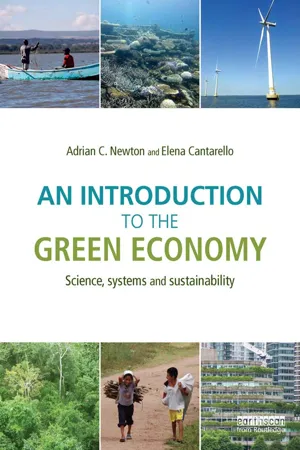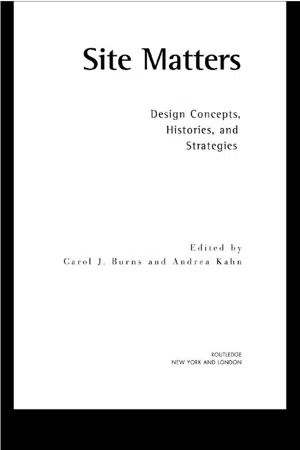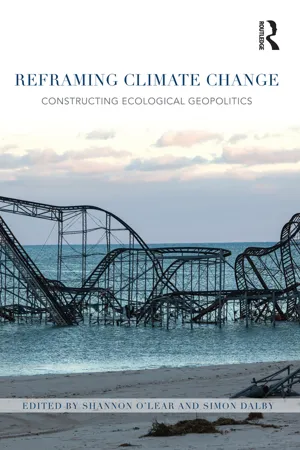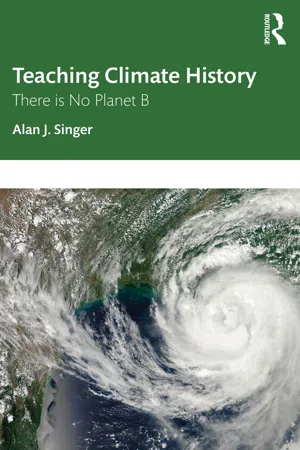Ecological Tipping Points
Ecological tipping points refer to critical thresholds in ecosystems where a small change can lead to a significant and often irreversible shift in the system. These points can result in abrupt and potentially detrimental changes to the environment, such as the collapse of a species population or the degradation of a habitat. Understanding and managing ecological tipping points is crucial for maintaining the stability and resilience of ecosystems.
5 Key excerpts on "Ecological Tipping Points"
- eBook - ePub
An Introduction to the Green Economy
Science, Systems and Sustainability
- Adrian C. Newton, Elena Cantarello(Authors)
- 2014(Publication Date)
- Routledge(Publisher)
...Similarly, shallow lakes can tab two stable regimes with respect to nutrient load, namely, a clear-water regime with aquatic plants and a turbid regime without vegetation. If the lake is in the clear-water regime, an increase in the nutrient content will lead to a gradual rise in turbidity until the critical threshold for plant survival is reached. At this point, vegetation collapses and the lake shifts to the turbid regime. Ecological resilience corresponds to the distance of the current value of nutrient concentrations to the critical or threshold value at which change occurs. Thus, if the specific shallow lake had a very low nutrient content, the ecological resilience would be high (Brand, 2009). From this example, you can see that the lake ecosystem has undergone a transition from one state to another, because a threshold (in this case, relating to nutrient content and turbidity) has been reached. Such ‘tipping points’ are now attracting a great deal of research interest (Lenton et al., 2008; Scheffer et al., 2012). Examples that have received recent attention include the potential collapse of the Atlantic thermohaline circulation (THC), the dieback of the Amazon rainforest, and the decay of the Greenland ice sheet. Such phenomena have been described as tipping points following the idea that, at a particular moment in time, a small change can have large, long-term consequences for a system (Lenton et al., 2008). Some evidence suggests that we may be approaching a planetary-scale tipping point as a result of human influence (Barnosky et al., 2012), though this is debated (Brook et al., 2013). 2.4.7 Social-ecological systems So far in this chapter, we have primarily focused on ecological processes and ‘natural’ ecosystems. However, it is also important to consider the human component of such systems. This has led to the concept of coupled or integrated ‘social-ecological systems’, of which humans are a part (Berkes et al., 2008)...
- eBook - ePub
Site Matters
Design Concepts, Histories and Strategies
- Carol Burns, Andrea Kahn(Authors)
- 2005(Publication Date)
- Routledge(Publisher)
...Geology is especially significant to site description, which, over the past century, often began by describing the very large-scale processes of geology and geomorphology as a way to construct a meaningful history of larger-scale processes that affect a local area. But like ecology, the last thirty years have introduced an entirely new theoretical process paradigm to the geological sciences. This new paradigm is also relevant because, unlike the ecological theories I have described thus far, it is a generative theory—by which I mean that it uses underlying thermodynamic processes to explain why large-scale geologic processes occur. In geology, theories describing the interactions between time and place have changed radically since the 1970s. Simply put, in that decade geologists were first able to provide compelling evidence that the mosaic of large-scale landforms on the surface of the earth is continually created and recreated by the dynamics of plate tectonics. The observation that plate tectonics appear to be driven by thermodynamics— the loss of heat energy in convection currents that circulate between the earth’s surface and its core—suggests that there may someday be opportunities to describe ecological dynamics in terms of their origins or, at least, in terms of a set of simpler “driving” patterns. 45 FLASHPOINTS This essay presents a transitional moment in ecological theory. Tracing recent developments using three categories (spatial scale shifts, temporal scale shifts, and the shift to seeing landscapes as dynamic mosaics that conceptually integrate spatial and temporal dynamics), it occurs to me that the complexity of the topic derives in part from my conscious effort to reveal changing conceptual frameworks by alternately thinking through both old and the new conceptual lenses. Future designers will doubtless find it easier to pick up the current ecological theories and run with them without looking back...
- eBook - ePub
Reframing Climate Change
Constructing ecological geopolitics
- Shannon O'Lear, Simon Dalby, Shannon O'Lear, Simon Dalby(Authors)
- 2015(Publication Date)
- Routledge(Publisher)
...It is a mistake to frame climate change in terms of potential dangers rather than in terms of the possibilities of creatively altering the direction in development policy. An ecological geopolitics should build for the future rather than fear social disruptions and prepare to deal with them violently. But, as Glover makes clear in Chapter 2, sustainability needs to be divorced from contemporary growth assumptions that assume that technical fixes and market management will somehow change economic systems enough to avert dangerous disruptions in coming decades. In Chapter 7, Shannon O’Lear investigates the pernicious effects of conventional territorial assumptions when measuring the causes of climate change and assigning responsibility. While it might appear to be sensible to start with territorial states because they are the basic units of governance in the contemporary world, counting emissions in terms of what happens within the territories of particular states omits a crucial part of the story. Because of international trade, items made in one part of the world are frequently used somewhere else. The current practice of assigning responsibility for GHG emissions to where things are made rather than to where they are used shifts responsibility away from the consumers who use the products to the producers. Effective attribution of responsibility for the embodied carbon in commodities requires that the counting methods reflect the final use of the product, but the current systems do not do that. Fixing this geographical sleight of hand would lead to much better allocation of the responsibilities for coping with climate change. One of the most obvious points about geopolitics and ecology is tackled directly here. While it is generally understood that environmental processes do not respect political boundaries, the issue of embodied carbon adds another important twist to our reliance on territorial strategies to respond to climate change...
- eBook - ePub
- Robert A. Francis, James D.A. Millington, George L.W. Perry, Emily S. Minor, Robert A. Francis, James D.A. Millington, George L.W. Perry, Emily S. Minor(Authors)
- 2021(Publication Date)
- Routledge(Publisher)
...(2017) Landscape ecology is an interdisciplinary field, drawing on theories and methods from across the physical, natural, and social sciences. Frazier (2019) Landscape ecology is predicated on the assumption that spatial patterns influence ecological processes, and those processes, in turn, feedback to form and alter landscape patterns. Frazier et al. (2019) Landscape ecology emerged gradually as ecologists began to study broader spatial areas beyond local ecotopes and became increasingly aware of the importance of distance and scale in shaping ecological patterns and processes. Landscape ecology’s defining characteristic is that it examines such relationships at broad spatial scales, usually from several hectares to many kilometers. Landscape ecology borrowed many theories, concepts, and methods from spatial analysis in quantitative geography and geographical information systems (GIS). As a discipline, landscape ecology contributed largely to the operationalization and application of many of these, in particular by using landscape metrics (e.g. Turner and Gardner, 1990, 2015). Investigations over broad spatial scales can be notably difficult and complex because of the many different factors driving patterns and processes and the problems associated with obtaining data and conducting scientific experiments over large areas. However, explorations at these scales, which can be achieved using a landscape ecology framework, are important for effectively addressing many environmental issues, from biological conservation to resource management. As a result, landscape ecology has been, and will continue to be, a discipline with growing demand and application. It is now widely acknowledged that a comprehensive understanding of landscapes and how they function is essential for addressing many environmental issues and developing effective and sustainable management techniques (e.g. Opdam et al., 2018), though achieving this is a complex and difficult task...
- eBook - ePub
Teaching Climate History
There is No Planet B
- Alan J. Singer(Author)
- 2021(Publication Date)
- Routledge(Publisher)
...3 Tipping Points DOI: 10.4324/9781003200864-3 In The Tipping Point: How Little Things Can Make a Big Difference (2000), Malcolm Gladwell, defines a tipping point as “the moment of critical mass, the threshold, the boiling point” (12). Systems, societies, even human relationships, exist in stasis or equilibrium, but internal tensions build up, or external forces intervene, and then BOOM! As a historian, I identify the tipping point as the point of no return when even if you are not aware, there is no going back. When the American Continental Congress voted for independence from Great Britain on July 2, 1776, they knew there was no turning back. In response to the decision, Benjamin Franklin is supposed to have said, “We must all hang together, or we shall all hang separately.” But the actual tipping point was probably over a year earlier on April 19, 1775, when fighting started in Massachusetts at the Battles of Lexington and Concord. Gladwell’s Tipping Point focused on the social phenomenon of how something becomes a trend. If Gladwell were writing the book today, he would probably explore the role of social media influencers and how something goes viral on the Internet. A sociological study published in 2008 discussed tipping points in the rapid segregation of once interracial communities and schools in a number of American cities. Researchers found that as long as the minority population, meaning Black, Latino, or Asian, of a neighborhood was under 15%, it maintained a racial balance, and schools were integrated. Once the minority population passed that “tipping point,” whites either began to sell their homes and move out and/or younger white families opted not to move in (Card, Mas, and Rothstein, 2008). In history, tipping points are generally harder to identify than in contemporary studies, usually because there are multiple underlying causes so there might not be an actual individual, discernable tipping point...




